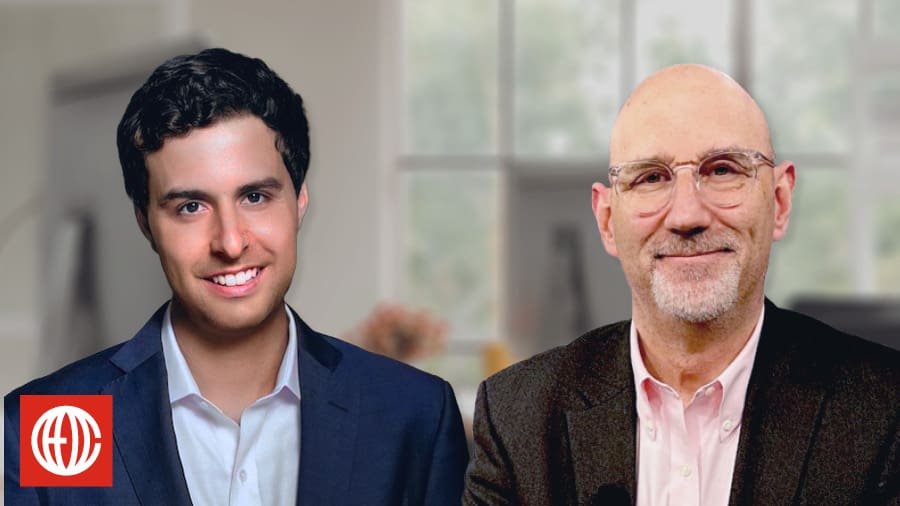A 5-Part Framework for Better CEO Self-Care
Guest: Luis Vargas, a coach at CEO Coaching International. Luis is a proven CEO and entrepreneur with over 20 years of experience in the travel, hospitality, e-commerce, and technology spaces. He is fluent in scaling early-stage startups through to exit and has held senior leadership roles at Fortune 500 companies. He also gave a popular TEDx talk, “Travel More & Buy Less,” that has been viewed over 1.6 million times.

Episode in a Tweet: If CEO self-care isn’t on your to-do list, it’s time to reassess your priorities.
Quick Background: It’s easy for CEOs to get so caught up in taking care of their businesses that we neglect an even more important responsibility: taking care of ourselves. Poor diet and exercise habits get compounded by no sleep and an excess of stress until one day you look in the mirror and can’t recognize the person looking back at you. If you’re not that lucky, you might not realize that go go go is no way to run a business until you’re waking up in a hospital bed.
Luis Vargas was 60 pounds overweight and running on empty when he decided he needed to make self-care a BIG priority. On today’s show, Luis shares the five elements he says he needed to win in order to transform his body, his mind, his business, and his life.
5 Keys to a Healthy Self-Care Routine from Luis Vargas
1. Know yourself.
In 2018, Luis was on a trip to Israel that should have been an incredible opportunity to connect with a community of entrepreneurs. Instead, “I did not feel like me,” he remembers. “Honestly, I just felt terrible. I had digestive issues. I had back pain. I really wasn’t sleeping. And I deeply felt and recognized that it was time to reconnect with myself.”
To do that, Luis went back to basics and asked himself, What do I want? He pictured a moment in his life when he felt better, when he could ski with his children and compete in long-distance bike races. Then he projected 12 months into the future in vivid detail so that he could see himself doing those activities again.
Sound familiar? Luis’ thought process isn’t all that different from the Crystal Ball exercise we encourage CEOs to do at the beginning of every year. In both life and business, sometimes you just need to get back in touch with what’s really important to you. When you can see those BIG goals, you can work backwards and see the daily, weekly, and monthly steps that will lead you there.
2. Find a catalyst.
“Often the hardest part of a journey is taking the first step,” Luis says. “I know that certainly was for me. I kicked off with a seven-day cleanse. I thought, I can do anything for a week. And it was enough for me to start some positive momentum.”
I think the lesson of Luis’ TEDx talk can be helpful here too: don’t turn your new life goal into an excuse to go on a shopping spree. Maybe you need to buy a new pair of running shoes to get going on your half-marathon goal. If that purchase catalyzes you, great. But it can be surprisingly easy to confuse clicking BUY with taking real, meaningful action. A business that’s constantly chasing after shiny new objects never gets anywhere. And a pair of running shoes that are still sitting in their box a month after you buy them aren’t doing you any good.
3. Ensure convenience.
So get those shoes out of the box and set them outside your bedroom door.
First steps aren’t just supposed to be small, they’re also supposed to be easy. Anything you can do to lower the barrier between yourself and taking that first step is going to make your second and third steps that much easier. As one foot follows the other, you’ll be developing healthy habits that integrate themselves into your daily routine.
“It’s gotta be easy, right?” Luis says. “We’re busy enough as it is. Get a Peloton. YouTube has endless content. Join a local gym that’s close to your office. If it’s on the nutrition side, buy meal plans or kits. Can you fit in a 20-minute walk? Can you take the stairs instead of the elevator? One of the most powerful things that I’ve learned is that simple things done consistently well can transform our lives.”
4. Embrace accountability.
Eventually, Luis narrowed his focus from wanting to get healthier to a specific goal: a 300-mile charity bike ride.
And then he asked people for donations.
“There was nowhere I could hide,” Luis says. If he let himself down, he’d also let down all the people who were chipping in and cheering him on.
Goals that are connected to health or physical appearance can be embarrassing. It’s not easy to admit that bad habits or poor time management have had a negative impact on how we look and feel. But when you share your self-care goals with the people who are closest to you, a support network tends to form. Family members will encourage you to get off the couch on those days when you’re just not feeling it. A trainer or coach is going to help you refine your technique and work towards your desired results more effectively. And the people you work with are going to notice if there’s a BIG new burst of energy emanating from your office.
“In my experience, being committed to self-care allows me to show up at work more fully,” Luis says. “And that is directly tied to performance and our ability to give in terms of energy levels, in terms of focus, in terms of drive, in terms of both the hard and soft skills that it takes to win. There’s no doubt that many of us can muscle through and still have good outcomes. But there’s an opportunity cost, right? If you are taking care of yourself will the outcome be 10%, 20%, 30%, 70% better? The journey is the destination. I am enjoying the ride that much more because I feel great.”
5. Build a framework.
To build out his personal framework, Luis drew from lessons he learned working with EXOS, a global leader in elite athlete training.
“The thread of performance is consistent across every discipline,” Luis says. “Doesn’t matter if you are an Olympian, an NFL or NBA player, a CEO or founder, a parent or a spouse. Functioning our best requires investment in four key areas:
- Mindset. Developing grit, really persevering towards long-term goals without any immediate reward is an important ability so we can exceed the limits of our self-image and build that self-confidence to get to that lasting change.
- Nutrition. How are we fueling and hydrating ourselves? What are we putting in our tank? Is it helping us get towards our goals? Or is it keeping us down?
- Movement. The training. Where are we getting our workouts in? How are we making it convenient?
- Recovery. I think this is the most disregarded. Sleep and downtime and putting down the devices. It’s mental and physical. How are we restoring ourselves so we can show up at our best?”
Any CEO could use this framework to carve out some self-care time and start working on some meaningful changes. But imagine what the impact could be if your company was encouraging your employees to find their own frameworks as well? As they fight to attract top talent in a very competitive labor market, many companies have started including gym memberships in their benefits packages. Others organize health challenges or company-wide fitness events. These programs promote a culture of wellness that creates happier, healthier, more engaged employees.
“How can we scale our businesses if our minds and bodies are running in the red?” Luis asks. “I’m constantly inspired and amazed by the depth of grit that we show as leaders and entrepreneurs and how we can crush our mind or bodies and soldier on. But there is no question in my mind that if we prioritize ourselves the outcomes and the multiples are going to be better.”
Top Takeaways
1. Don’t wait. Prioritize self-care while it’s still a choice, not doctor’s orders.
2. Start simple. A step that’s too big for you to take today is one you might not try to take again tomorrow.
3. Share your goals. You’re more likely to hit your targets if you don’t aim for them alone.
[Tweet “If CEO self-care isn’t on your to-do list, it’s time to reassess your priorities.”]
About CEO Coaching International
CEO Coaching International works with CEOs and their leadership teams to achieve extraordinary results quarter after quarter, year after year. Known globally for its success in coaching growth-focused entrepreneurs to meaningful exits, the firm has coached more than 1,500+ CEOs and entrepreneurs across 100+ industries and 60 countries. Its coaches—former CEOs, presidents, and executives—have led businesses ranging from startups to over $10 billion, driving double-digit sales and profit growth, many culminating in eight, nine, or ten-figure exits.
Companies that have worked with CEO Coaching International for two years or more have achieved an average revenue CAGR of 25.9%, nearly 3X the U.S. average, and an average EBITDA CAGR of 39.2%, more than 4X the national benchmark.
Discover how coaching can transform your leadership journey at ceocoachinginternational.com.
Learn more about executive coaching | Meet our world-class coaches








